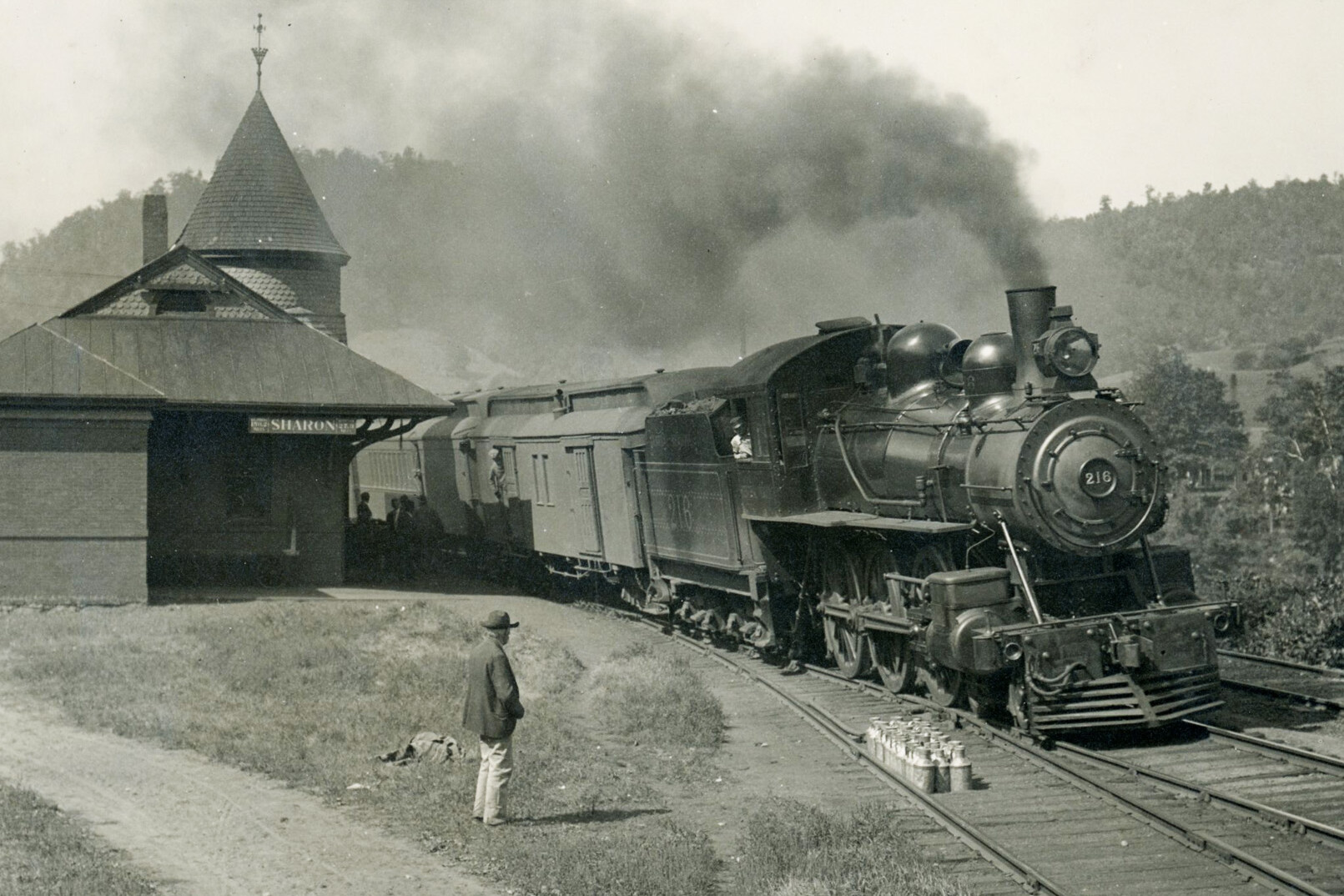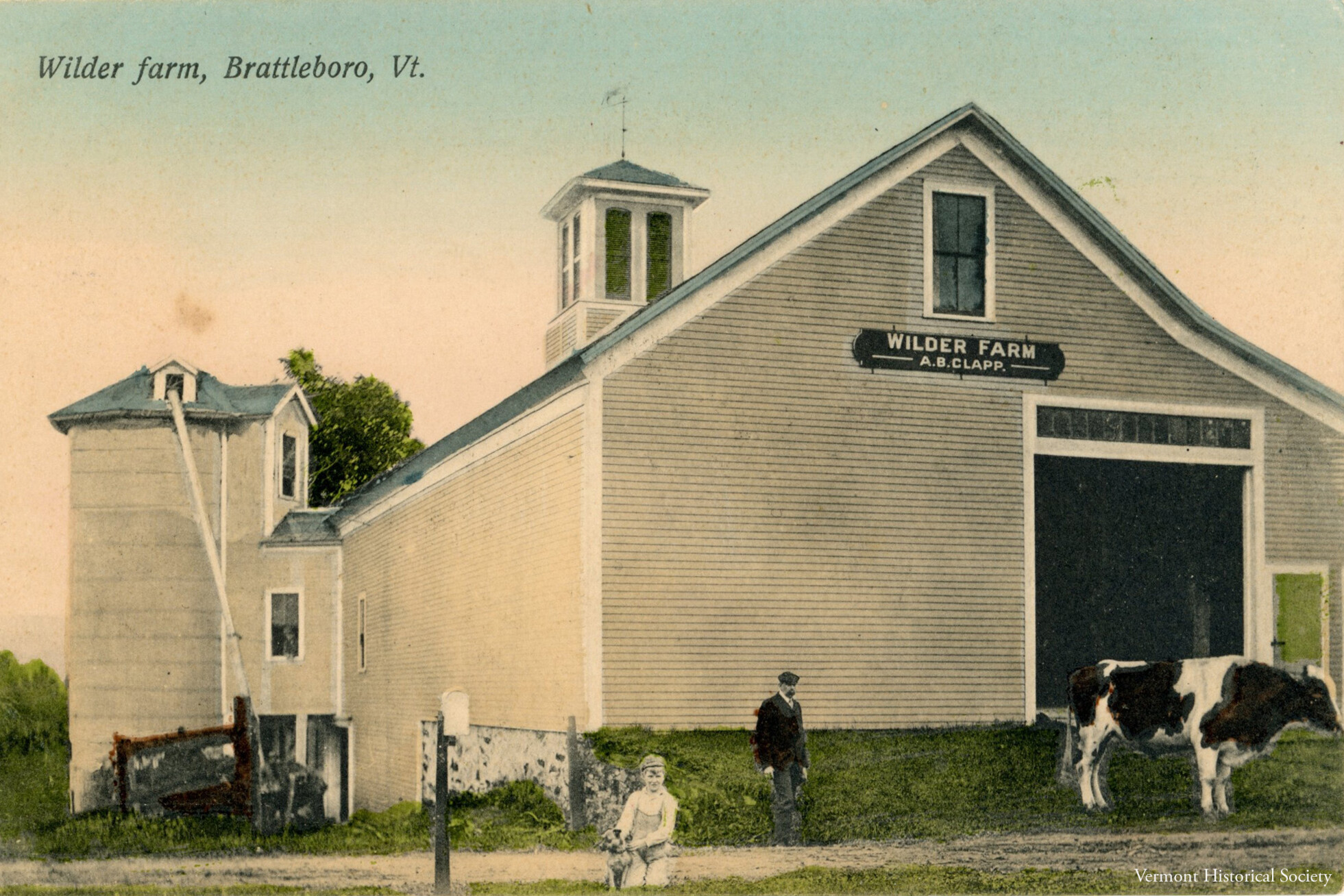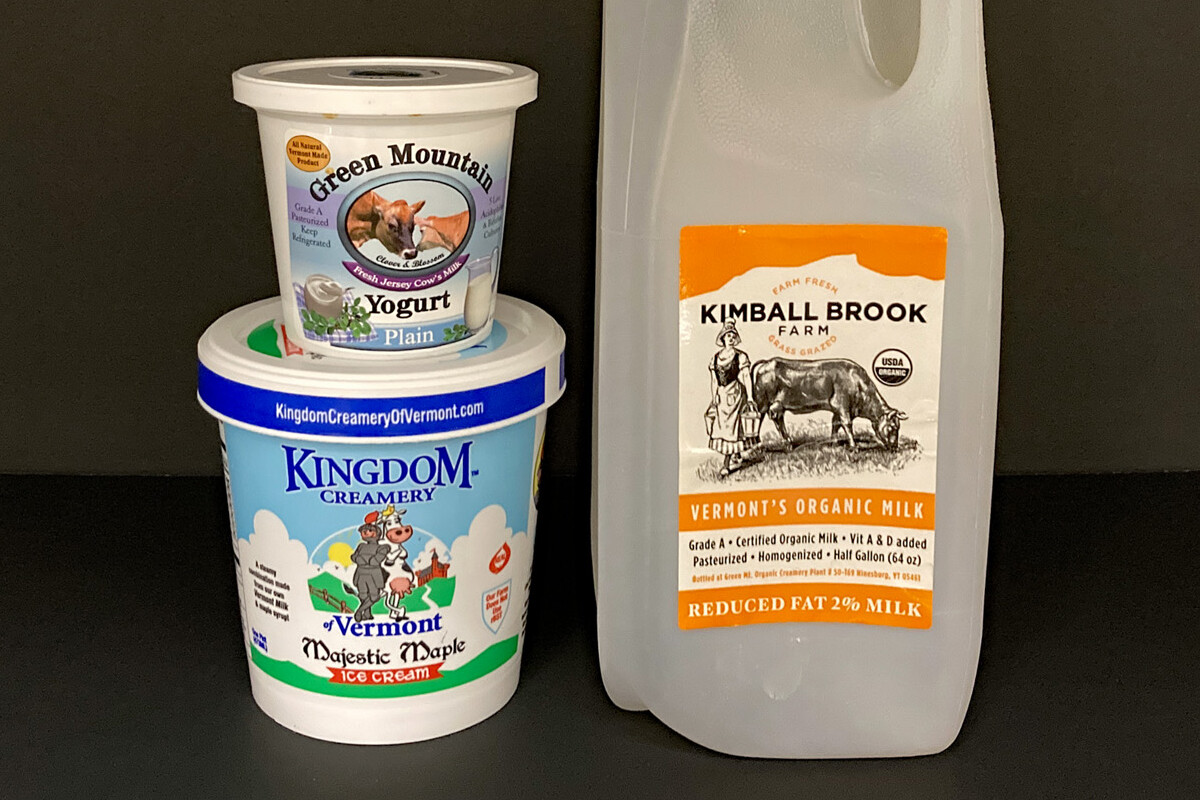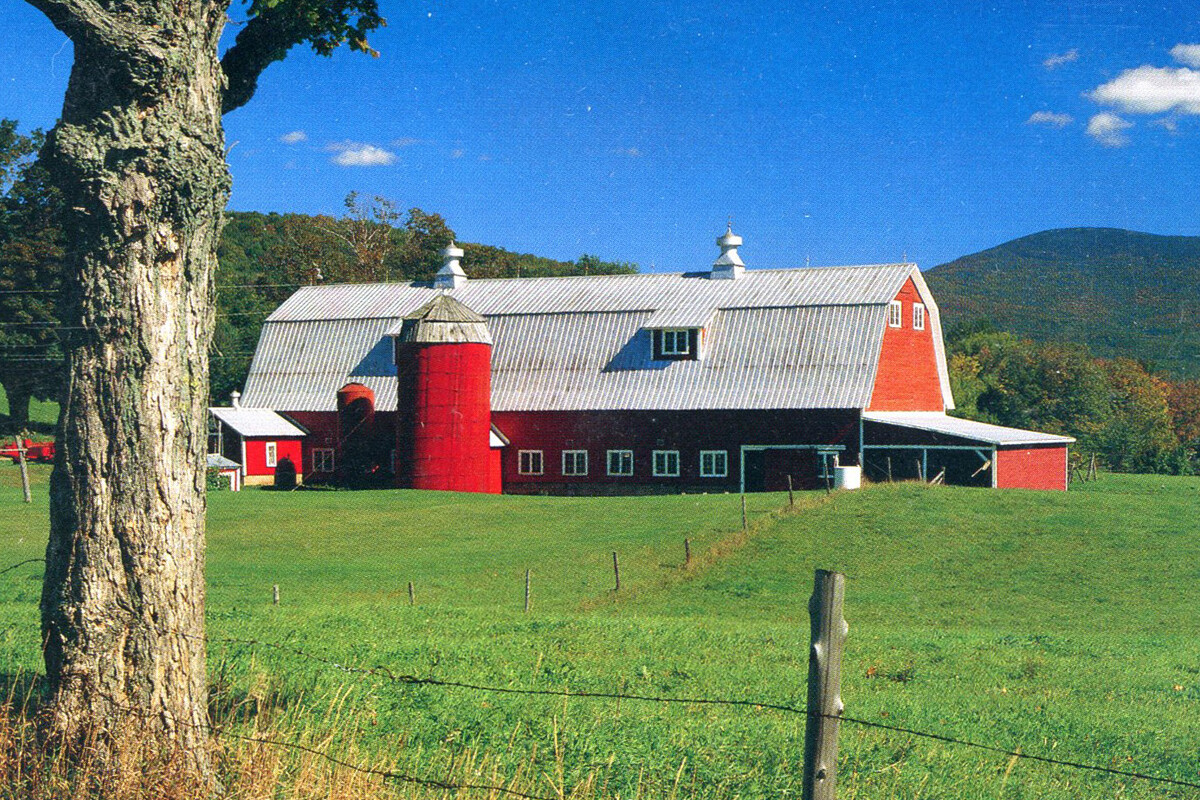Cows in Vermont
How has dairy farming in Vermont changed over time?
When was the last time you saw a cow in Vermont? The state flag has a red cow on it. Ben and Jerry’s advertises(calls attention to or tries to sell) ice cream with black and white cows. Milk is Vermont’s official state beverage(a type of drink). Cows are an important part of Vermont agriculture, now and in the past.
By the 1850s, many Vermont farmers started keeping cows instead of sheep. They made more money selling dairy(related to milk and milk products) products than selling wool. At that time, most farmers used the cream from milk to make butter and cheese. New railroad tracks connected Vermont to other parts of New England. Farmers shipped butter and cheese on refrigerated train cars to merchants in Boston.
By the late 1800s, many Vermont dairy farmers took their milk to creameries(factories that make butter and cheese). In the 1890s, the Franklin County Creamery Association in St. Albans was the largest butter factory in the world! By 1920, Vermont farmers also shipped liquid milk to Boston.
Running a dairy farm was – and still is – hard work. Cows needed to be milked twice a day, every day. The cows grazed(ate grass) in pastures in warm weather and stayed in barns in cold weather. Farmers grew and harvested hay and corn in the summer to feed their cows in the winter. By 1890, the average dairy farm had 15 to 25 cows. Farmers built larger barns with more room to hold cows and hay. They added silos(tall round buildings for storing animal food) to store corn stalks and other food for the cows.
Although Vermont dairy farms produced more and more milk, the number of farms started going down after 1880. Some of the people who stopped being farmers lived on remote(far away) hill farms. These farms were far away from towns with creameries and railroads. Farms in valleys often had better land for growing hay and corn.
In the mid-1900s, farmers started using tractors instead of horses to plant and harvest crops. Farmers milked cows with electric milking machines. They bought large bulk tanks(large metal containers that hold a lot of milk) to hold the milk. To keep their cows healthy, farmers had to replace wooden floors in barns with concrete floors. Some farmers stopped farming because they could not afford all these expensive changes. In 1966, over 900 dairy farms shut down in one year.
Other farmers built new barns and bought more cows and equipment. Many farmers started keeping Holstein cows. Holsteins produce more milk per cow than other breeds. Most of the milk from Vermont cows is now used in Vermont factories. Much of it is turned into cheese, ice cream, butter, yogurt, sour cream and other dairy products.
The number of dairy farms is still decreasing(getting smaller in number), but the average size of dairy farms is going up. In 2021, there were fewer than 600 dairy farms in Vermont. Today, over half the dairy farms have more than 50 milking cows. Some farms have over 700 cows. Since the 1990s, immigrant(person who moves from another country) workers from Mexico and Central American have worked in Vermont on some of these large dairy farms.
Many people still think of Vermont as a dairy state. If you travel around the state, look for barns with large hay lofts(large open spaces sometimes used for storage) and silos. Look for fields of corn, hay, and soybeans. These are evidence of dairy farming in Vermont in the past and today. Keep your eyes open for cows in Vermont. Will you see one in a field or barn – or on a label in the grocery store?
Thinking About History
Historians ask questions to think deeply about history.
There are many old dairy barns that are no longer used for cows. What should happen to these old barns? Should they be saved or torn down? Or turned into different kinds of buildings, like apartments or offices?
Learn More
Follow the links below to explore related topics.
How has work on a dairy farm changed over time?
Learn about Ben & Jerry's cow, designed by artist Woody Jackson
Learn about breeds of dairy cows
Read the article Butter, How to Make Your Own from Green Mountaineer Magazine
Read the article Farmer’s Gold from Green Mountaineer Magazine
Learn about Jersey cows at Billings Farm and Museum
Listen to the podcast How is cheese made? from the But Why
Watch the video Hand Methods of Hay Harvesting (1940s) from UVM Agricultural Experiment Station
Watch the video Goodrich Family Farm from This Place in History
Watch the video Home Acres Farm from This Place in History
Watch the video Monument Farms Dairy from This Place in History
Watch the video Milton's Co-Op Creamery from This Place in History
Copy and paste this citation to show where you did your research.
Vermont Historical Society. "Cows in Vermont." Vermont History Explorer. Accessed January 6, 2026. https://184.154.140.254/cows-in-vermont



